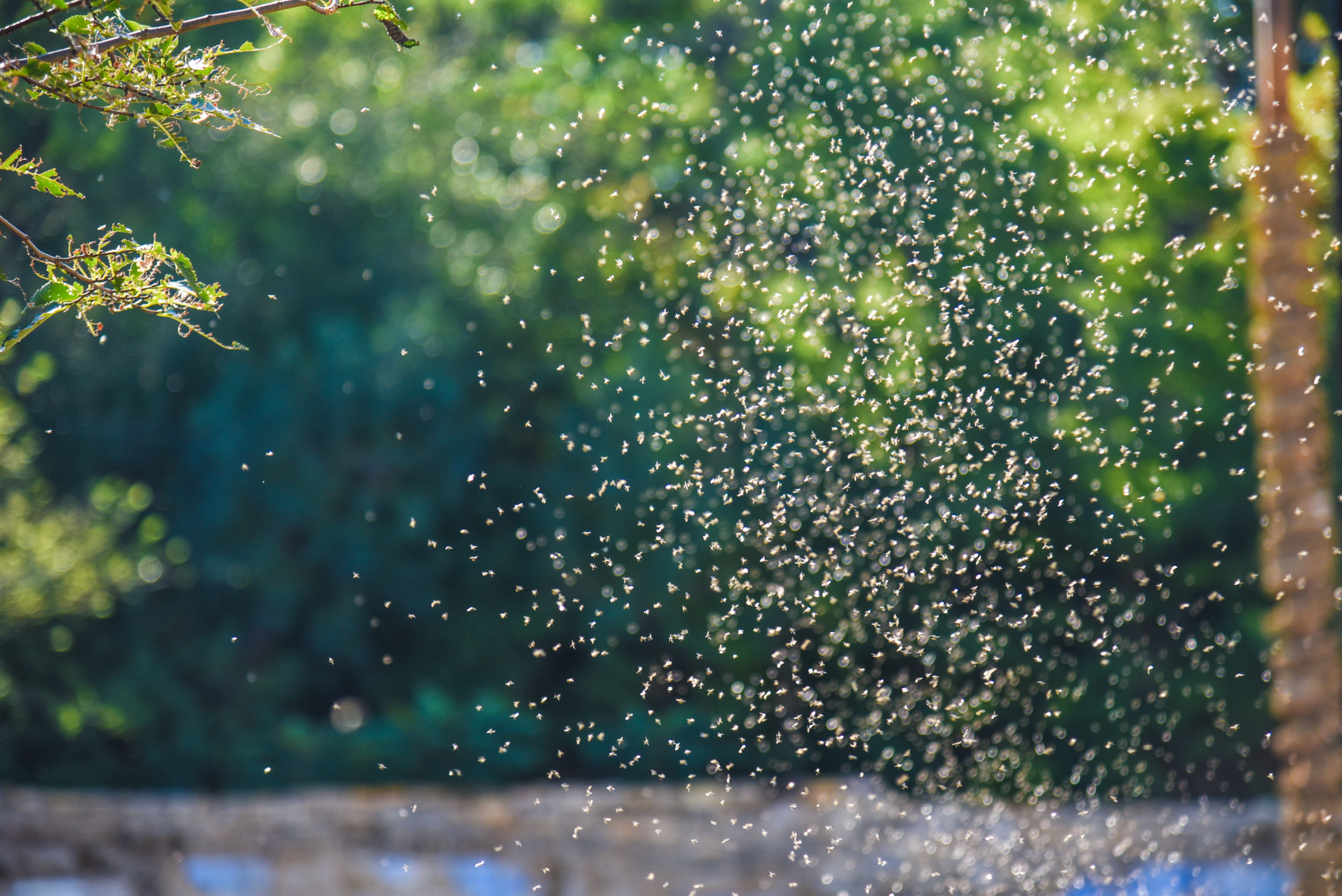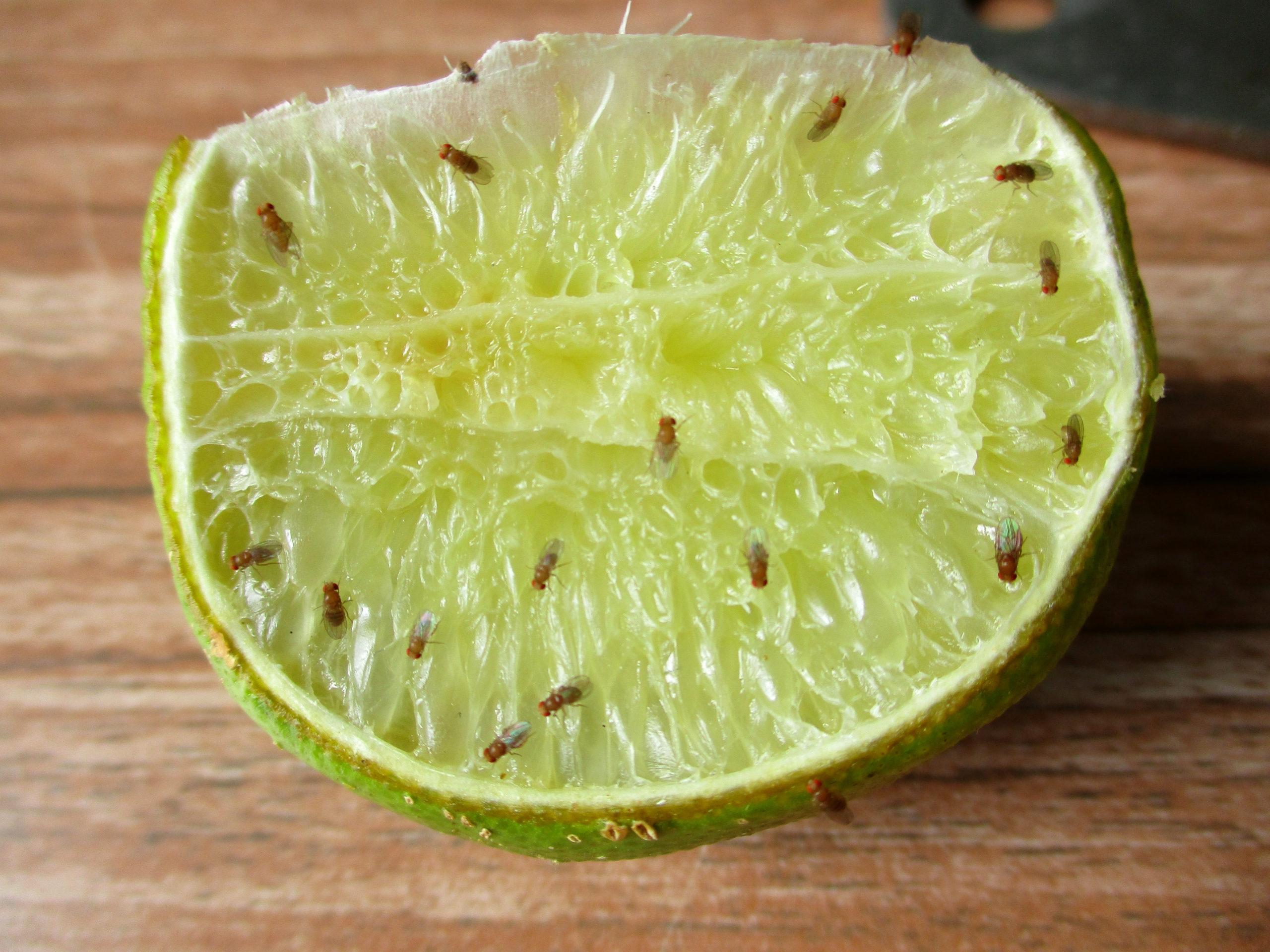Gnats – What Are They & How Do You Get Rid of Them?
Gnats – What Are They & How Do You Get Rid of Them?
What are Gnats?
The word ‘gnat’ is actually a colloquial term used to describe a number of different species of insects that appear to be super small flies. These small flies are typically part of the suborder Nematocera meaning that they are a type of fly that is characterized by their thin limbs. Some of the most common home-invading gnats include fruit flies, drain flies (aka. phorid flies), and fungus flies.

Gnat Behavior
Gnats are very drawn to moisture/humidity and use areas such as flooded planters, puddles, leaky pipes, etc. as breeding grounds. They are also very affected by temperature and can live for different time spans depending on how hot or cold their environment is. As larvae, gnats consume a variety of fungus, algae or plants while, as adults, they feed on nectar, pollen, fruits, vegetables and other live or decaying plant matter.
Their lifespans are notoriously short with most species living only long enough to breed before expiring. Around dusk or in areas of heavy shade, mating swarms of gnats can often be seen flying around and are more commonly encountered in areas near a body of water or high humidity. Luckily, gnats are intermittent and temporary problems, disappearing at the end of summer when temperatures and humidity go down.

Gnat Control
Just like house flies, gnats are extremely common pests that, unfortunately, exterminators typically cannot treat. This is due to the fact that fly infestations are caused by a stimulant and will continue until the stimulant is removed. For example, fruit flies are primarily attracted to overripe fruits and/or vegetables. Consequently, they are often found in restaurants and homes where food is left out or where garbage with rotting fruits is accessible. Therefore, the best way to avoid these pests is by eliminating the source of their attraction. Don’t leave overripe fruit on your countertop and make sure both your inside garbage cans and outside cans have tops to seal them.
Another great example of this, is drain flies. These dark colored gnats congregate around toilet bowls, floor drains, shower drains, sink drains, etc. This is because the larval state of drain flies requires stagnant water to survive, which is also why they are typically found in homes following vacations. Once normal water flow resumes in the problematic drains the flies that aren’t washed away will leave, relocating to another breeding site.
After eliminating any sources that may be attracting gnats, you can also make a simple homemade trap to capture and dispose of the remaining tiny flies. The trap consists of a jar with a bit of fruit in it at the bottom and a rolled-up bit of paper forming a tunnel with a small entry point facing the fruit. Baited in by the fruit, the gnats should travel down the length of the funnel and enter the jar. But after feasting on the bait, they will find it especially difficult to locate the small hole that they entered from and will most likely remain inside the jar as their fellow gnats begin to join them.

Citations
Gnat (no date) Amateur Entomologists’ Society (AES). Available at: https://www.amentsoc.org/insects/glossary/terms/gnat/ (Accessed: June 24, 2021).
House Fly: Musca domestica Linnaeus (2017) Entomology and Nematology of University of Florida. The Florida Department of Agriculture and Consumer Services. Available at: http://entnemdept.ufl.edu/creatures/urban/flies/house_fly.HTM (Accessed: July 2020).
Mendoran, S. (2021) What Causes Gnats and How to Get Rid of Them, Dengarden. Available at: https://dengarden.com/pest-control/gnat (Accessed: June 24, 2021).
Posegate, A. (2011) The scoop on gnats: the weather they like & why they drive us nuts, The Washington Post. Available at: https://www.washingtonpost.com/blogs/capital-weather-gang/post/the-scoop-on-gnats-what-weather-they-like-and-why-they-drive-us-nuts/2011/07/26/gIQAjSyoaI_blog.html (Accessed: June 24, 2021).
Potter, M. (no date) Fruit Flies, Entomology at the University of Kentucky. University of Kentucky Department of Agriculture, Food, and Environment . Available at: https://entomology.ca.uky.edu/ef621 (Accessed: July 2020).
Prevention and Control: Biting Flies (no date) Illinois Department of Public Health. Available at: http://www.idph.state.il.us/envhealth/pcbitingflies.htm (Accessed: July 2020).
Townsend , L. (2007) Drain Flies or Moth Flies , Entomology at the University of Kentucky . University of Kentucky College of Agriculture, Food and Environment . Available at: https://entomology.ca.uky.edu/ef615 (Accessed: July 2020).
Townsend, L. (1997) Midges and Gnats, The University of Kentucky College of Agriculture, Food, and Environment Department of Agriculture. Available at: https://entomology.ca.uky.edu/ef632 (Accessed: June 24, 2021).
What are Gnats? Are Gnats Flies? (2021) Ask an Entomologist. Available at: https://askentomologists.com/2021/02/10/gnats/ (Accessed: June 24, 2021).

